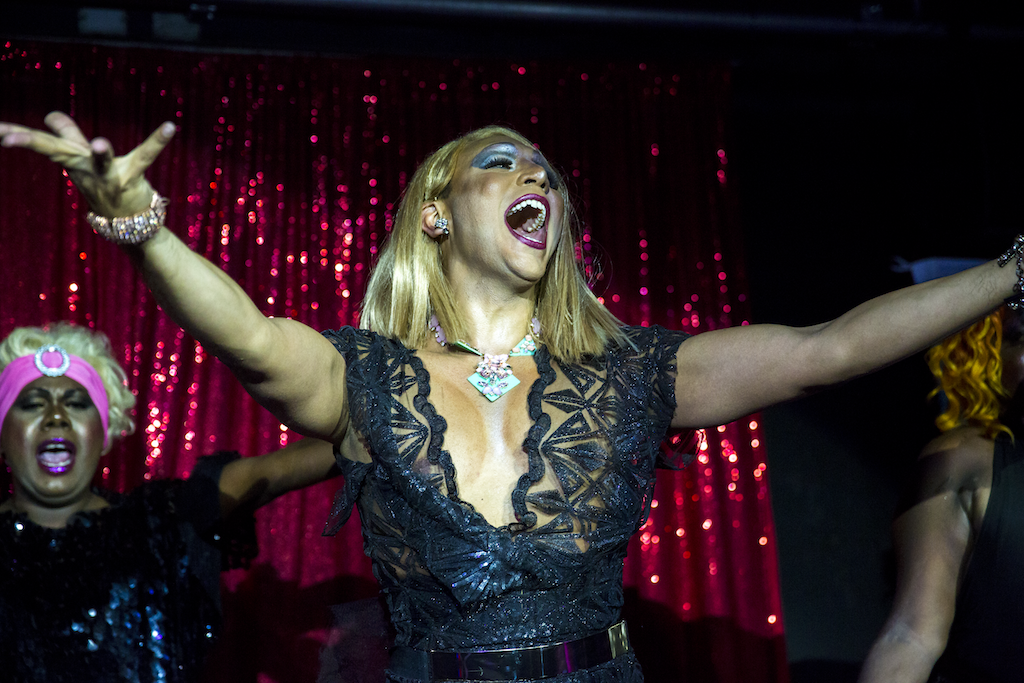This article originally appeared on VICE Canada.
Adrian Russell Wills is an Australian filmmaker whose works often focus on and dialogue with the experiences of Australia’s Melanesian Aboriginal and Torres Strait Islander peoples, and with his new documentary Black Divaz, Wills aims to spotlight an intersection of Indigenous and LGBTQ communities: Indigenous drag queens in Australia.
The documentary, which premiered in North America at Toronto’s imagineNATIVE Film and Media Arts Festival last weekend, follows six drag queens as they compete in the inaugural Miss First Nations Pageant in Darwin, Australia. The competition was devised by Darwin-based drag queens and hosts Miss Elaneous and Marzi Panne. “The idea of an inaugural drag pageant for First Nations queens was way too much of an opportunity to pass up,” he explains over the phone from Sydney.
The pageant’s setting in Darwin, a city isolated on Australia’s northern coast, became a point of interest. Wills says that LGBTQ folks living in remote communities like those in the country’s Northern Territory lack critical access to communal support. “It’s been a really tough time for a lot of LGBTQ people to come out in the communities and their families are particularly in remote areas so the whole competition in Darwin was really appealing,” he says.
Wills’s documentary follows the queens—Nova Gina, Crystal Love, Isla Fuk Yah, Josie Baker, Shaniquá Tiwisista, and Jojo Zaho—as they arrive, prepare for, and compete in the pageant with dance routines and talent shows. Wills’ intimacy and connection with the queens, palpable from behind the camera, is among the defining features of Black Divaz, which spools out equally as an interrogation of Indigeneity in LGBTQ communities and of queerness in Indigenous communities.
The documentary comes amidst what Wills refers to as a “zeitgeist” moment for drag, referring to the pop culture phenomena that is of RuPaul’s Drag Race. While he praises that series’ normalizing power, he notes that the pageant organizers intended to trade Drag Race’s cutthroat competitiveness for a more universal tone. “What really happened in the making of [Black Divaz], instantly, was it was about sisterhood,” he says. “It wasn’t about putting each other down or giving shade, which is part of the drag humor. It was about them lifting each other up, and helping each other with the costumes.”

The effects of this colonial violence continues to shake Indigenous peoples across the world. Wills notes that suicide rates in Aboriginal Australians are among the highest in the world, a statistic echoed in Canada where Inuit suicide rates have reached 11 times the national average. Wills’ goal, he says, is to show youth that they, too, can and will find their mob.
With Black Divaz, he has already begun to accomplish this. The second annual Miss First Nations Pageant is underway in Sydney, and he explains that one of the queens is in the competition because of Black Divaz—she began doing drag after seeing the documentary. “She said, ‘It was because I saw the film that I felt safe enough to come out and do that,’” Wills says warmly. “You can take the shittiest parts of life, dress it up, put a set of lips and eyelashes on and smack a wig on, and have fun and live your life with all your colors.”
Sign up for our newsletter to get the best of VICE delivered to your inbox daily.
Follow Luke Ottenhof on Twitter.
from VICE US https://ift.tt/2D3Bt9j
via cheap web hosting
No comments:
Post a Comment